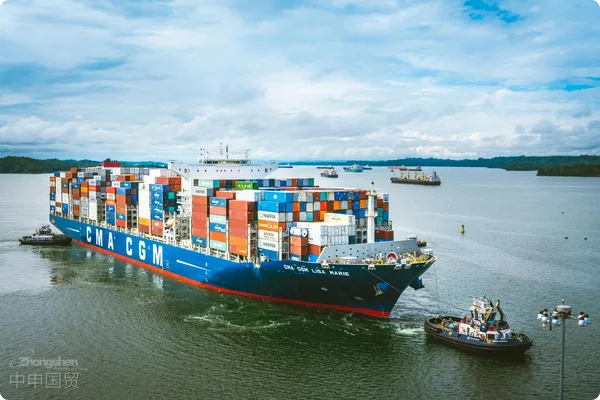- Shanghai Zhongshen International Trade Co., Ltd. - Two decades of trade agency expertise.
- Service Hotline: 139 1787 2118
In the first seven months of 2024, Chinas goods trade maintained steady growth, reaching a record high for the same period in history. According to data released by the General Administration of Customs on August 7, Chinas goods trade in the first seven months of this yearimport and exporttotaled 24.83 trillion yuan, a year-on-year increase of 6.2%. Exports reached 14.26 trillion yuan, up 6.7%, while imports amounted to 10.57 trillion yuan, up 5.4%. In U.S. dollar terms, the total import and export value in the first seven months was $3.5 trillion, up 3.5%, with exports at $2.01 trillion, up 4%, and imports at $1.49 trillion, up 2.8%.

In July alone, Chinas total import and export value was 3.68 trillion yuan, a year-on-year increase of 6.5%. Exports reached 2.14 trillion yuan, up 6.5%, while imports totaled 1.54 trillion yuan, up 6.6%. This data indicates that despite the complex international economic environment, Chinasforeign tradeperformance remains stable and progressive, especially with import and export growth rates consistently above 5% over the past four months, showcasing the resilience of Chinas economy and the strong momentum of foreign trade development.
Lv Daliang, Director of the Department of Statistics and Analysis at the General Administration of Customs, noted that Chinas economy has generally operated smoothly this year, with foreign trade showing good growth momentum. The import and export scale in the first seven months reached a record high for the same period. Prior to this, analysts were generally optimistic about Julys import and export data. For example, Wen Bin, Chief Economist at China Minsheng Bank, and his team pointed out in a research report that South Koreas exports in July increased by 13.9% year-on-year, reflecting the high prosperity of the global semiconductor market, which is favorable for Chinas electronics exports. Additionally, Vietnams manufacturing PMI remained flat at 54.7%, with exports hitting a yearly high of 21%, which also positively impacted Chinas exports of raw materials and intermediate goods.
From the perspective of external demand, the U.S. ISM Manufacturing PMI in July fell to 46.8%, while the Eurozone Manufacturing PMI stabilized, remaining flat at 45.6% month-on-month. These figures suggest that economic activity in developed economies like the U.S. and Europe is gradually recovering, providing support for Chinas export growth. Notably, Chinas Manufacturing New Export Orders PMI rose by 0.2 percentage points to 48.5%, and the Import Orders Index also increased by 0.1 percentage points to 47%, indicating that import and export values may continue to rise slightly in the coming months.
Among major trading partners, ASEAN remains Chinas largest trading partner. In the first seven months of this year, Chinas trade with ASEAN totaled 3.92 trillion yuan, up 10.5%, accounting for 15.8% of Chinas total foreign trade. This growth reflects the sustained strong demand for Chinese goods in ASEAN countries and the close cooperation between China and ASEAN in regional economic integration.
It is worth noting that Chinas import and export trade with developed economies such as the EU and the U.S. has achieved positive growth in the first seven months. Trade with the EU totaled 3.22 trillion yuan, up 0.4%, with exports to the EU at 2.1 trillion yuan, up 1.5%, and imports from the EU at 1.12 trillion yuan, down 1.5%. Trade with the U.S. totaled 2.72 trillion yuan, up 4.1%, with exports to the U.S. at 2.04 trillion yuan, up 5.1%, and imports from the U.S. at 683.91 billion yuan, up 1.2%. These figures demonstrate that despite ongoing global trade frictions, trade between China and major economies remains stable, highlighting the strong resilience of Chinas foreign trade.
Meanwhile, Chinas trade with countries participating in the Belt and Road Initiative (BRI) has maintained strong growth momentum. In the first seven months of this year, the total import and export value between China and these countries reached 11.72 trillion yuan, an increase of 7.1%. Exports amounted to 6.56 trillion yuan, up 7.7%, while imports totaled 5.16 trillion yuan, growing by 6.3%. This growth not only reflects the deepening economic and trade cooperation between China and relevant countries under the BRI but also demonstrates the strong demand for Chinese goods in these emerging markets.
In terms of product structure, several dominant categories of Chinas mechanical and electrical exports maintained double-digit growth in the first seven months. The export value of automatic data processing equipment and components reached 815.88 billion yuan, up 11.6%; integrated circuits totaled 640.91 billion yuan, increasing by 25.8%; and automobile exports amounted to 462.86 billion yuan, growing 20.7%. Meanwhile, labor-intensive products also showed steady growth, with exports reaching 2.43 trillion yuan, up 5.1%. Among these, textiles, plastic products, and agricultural products performed particularly well.
In summary, Chinas foreign trade has demonstrated strong resilience and growth potential in the first seven months of this year despite the complex global economic environment. Although uncertainties in the international market persist, the steady performance of Chinas foreign trade has injected new momentum into global economic recovery. In the coming months, Chinas foreign trade is expected to maintain stable growth and play an increasingly important role in global supply chains.
Related Recommendations
? 2025. All Rights Reserved. Shanghai ICP No. 2023007705-2  PSB Record: Shanghai No.31011502009912
PSB Record: Shanghai No.31011502009912










